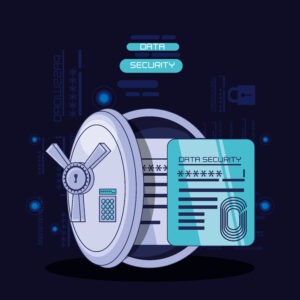As technology advances, so do the capabilities of IoT devices. With embedded AI, these interconnected smart devices are pushing boundaries, improving automation, and enabling real-time data processing. From your home to the factory floor, AI-powered IoT is establishing smarter connections. Devices can now learn behaviors, predict outcomes, and make recommendations. Your thermostat adjusts not just to your presence but your preferences. Vehicles recognizes obstacles long before you do. Your supply chain autonomously adapts to disruptions. Integrating AI and IoT has paved the way for technology that thinks for itself. It is transforming efficiency, convenience, and safety for consumers and businesses alike. But how far can these smarter connections go, and are there limits we should set? This article explores the growing role of AI in IoT and the potential it brings.
The Evolution of AI-Powered IoT
Embedded Intelligence in AI-Powered IoT
IoT devices are gaining embedded artificial intelligence, enabling them to process data in real-time and automate responses. Smart speakers, for instance, use natural language processing to understand voice commands and personalize responses. Self-driving vehicles apply computer vision and deep learning to perceive the environment around them and navigate roads.
AI-Powered IoT Enhanced Capabilities
With AI, IoT devices can detect complex patterns in data, and learn from experiences. They also make intelligent decisions with minimal human input. An AI-powered sensors in a smart factory might detect anomalies on an assembly line and automatically adjust equipment to maximize productivity and quality. In a smart home, AI-enabled devices can learn residents’ preferences and habits over-time to provide personalized and proactive services.
Pushing the Boundaries
AI unlocks new possibilities for IoT in every industry. In healthcare, AI and IoT enable real-time health monitoring, personalized treatment plans, and early detection of diseases. In transportation, technology is powering innovations. To name a few: predictive maintenance of vehicles and infrastructure, intelligent traffic management, and autonomous mobility. AI and IoT show promise for tackling some of the world’s biggest challenges, including climate change, sustainable agriculture, and affordable quality education.
The integration of AI and IoT is transforming devices into increasingly intelligent “things” that are self-aware, self-monitoring, and self-optimising. As these smarter connections continue to evolve, the possibilities for automation and insight will become limitless. With proper safeguards and oversight in place, AI-powered IoT can push the boundaries of what is possible and drive real progress on prominent issues.
Key Applications of AI-Powered IoT: Automation, Analytics, and More
Automation and Control with AI-Powered IoT
AI enhances automation in IoT by enabling devices to learn routines, patterns, and preferences over time and adjust accordingly with minimal human input. For example, AI-powered thermostats can learn heating and cooling preferences to automatically adjust the temperature for maximum comfort and efficiency. In industrial settings, AI-integrated sensors and systems can detect anomalies and adjust processes automatically to optimize productivity, reduce waste, and improve safety.
Predictive Maintenance of AI-Powered IoT
AI analyses data from IoT sensors to identify patterns that indicate potential issues. By monitoring systems and equipment, AI can predict when parts might fail or need replacement and alert technicians to take preventive action. This predictive maintenance helps reduce costs by minimizing downtime and avoiding catastrophic failures. It also enables a transition from time-based to condition-based maintenance.
Personalization
AI uses data from IoT devices to determine user preferences and behaviors and customize the user experience. For example, AI-powered voice assistants can learn an individual’s speech patterns, vocabulary, and personal preferences. They respond in a more natural and personalized manner over time. In a smart home, AI can adjust lighting, thermostats, and entertainment systems based on the resident’s typical routines and preferences for maximum convenience and comfort.
Enhanced Data Analytics
AI enhances the ability to analyze huge volumes of data from IoT deployments. AI systems can identify complex patterns and relationships in IoT data that would be nearly impossible for humans to detect. These insights enable improved decision making, optimised performance and new innovations. For example, cities are using AI to analyze data from sensors and IoT infrastructure. This is to better understand traffic and transit patterns, optimize energy usage and improve public services.
AI will continue to enhance connectivity and push the boundaries of IoT. This enables devices and systems with increasingly sophisticated capabilities for automation, predictive power, and personalization across applications. The convergence of AI and IoT will drive the next wave of intelligent connectivity.
AI-Powered IoT Pushing the Boundaries in Smart Homes
AI-powered IoT devices are enhancing smart home automation in revolutionary ways. AI systems can now analyze data from multiple IoT sensors. In turn, this gains a more comprehensive understanding of occupants’ needs and preferences.
AI facilitates personalized smart home automation based on individual lifestyle patterns and preferences. Motion sensors, smart speakers, and other IoT devices generate data that AI systems analyze. Which is used to determine routine activities, such as sleep schedules or times when occupants are away. The systems automatically adjust device settings like lighting, thermostats, and home security for maximum comfort and convenience.
Enhanced Home Monitoring
- AI-powered IoT devices also enable enhanced home monitoring. Connected sensors can detect anomalies like changes in humidity or the opening of doors or windows. AI systems analyze this data in real-time and can determine if the anomalies represent potential issues. For example, a sudden drop in temperature could indicate heating problems, or movement detected when occupants are away could signify an intruder. The AI can then automatically alert homeowners or emergency services as needed.
Customized Energy Efficiency
- AI helps maximize energy efficiency in smart homes. By analyzing data from IoT sensors and devices like smart thermostats, AI systems can identify optimal temperature set points. They can also adjust lighting levels for each room based on time of day and occupancy. The systems can then automatically adjust settings to minimize energy usage while keeping occupants comfortable. AI can also detect inefficient energy usage patterns and provide customized tips for improvement.
While AI-enhanced IoT devices are pushing the boundaries of smart home capabilities, privacy and security concerns persist. However, when implemented responsibly with strong security protocols and transparency, AI and IoT together can make homes more convenient, comfortable, and sustainable. Overall, AI-powered IoT is transforming smart homes into truly intelligent living spaces.
AIoT Driving Efficiency in Industrial Automation
Artificial Intelligence of Things (AIoT) is transforming industrial automation by enabling devices to become smarter and more autonomous. Connected sensors and actuators embedded with AI algorithms can process data in real-time, adjusting operations dynamically. This reduces latency, improves precision, and enhances productivity.
Optimising Asset Utilisation
- AIoT solutions can optimize the utilization of industrial equipment and infrastructure. By monitoring asset performance and predicting maintenance needs, AI systems determine the optimal time to service or replace components before failure occurs. This prevents unscheduled downtime, maximizing operational efficiency.
Enhancing Predictive Maintenance
- AI technologies like machine learning analyze data from connected sensors to identify patterns that indicate potential issues. The AI systems can then predict when a component or system is likely to fail so that maintenance can be performed proactively. This predictive maintenance approach reduces costs by up to 25% and decreases unplanned downtime by up to 50%.
Automating Quality Assurance
- In manufacturing, AIoT devices with computer vision can automatically inspect components and finished goods. The AI systems detect any defects and imperfections, ensuring consistent quality. This reduces waste and rework, lowers costs, and enhances customer satisfaction. AI-based quality assurance solutions are faster and more accurate than human inspectors, who can become fatigued over time.
Personalizing Experiences
- In some industrial environments, Amiot solutions can even personalize experiences. For example, connected tools and equipment on assembly lines or in warehouses may adapt interfaces and interactions based on an individual worker’s preferences, skills, and behaviors. This tailored approach improves productivity, safety, and job satisfaction.
Amiot is poised to transform industrial automation, driving substantial gains in efficiency, productivity, and competitiveness. By enabling smarter, more autonomous devices and systems, AI will power factories and facilities of the future.
The Future of AI-Enhanced IoT: When Artificial Intelligence Meets the Internet of Things
The increasing integration of AI into IoT devices will enable more sophisticated automation and data-driven insights.
AI enhances IoT devices’ automation capabilities by enabling them to dynamically adapt to changing conditions in real-time. AI systems can detect patterns, analyze massive amounts of data, and adjust device behavior accordingly without human input. For example, AI-powered IoT devices in smart homes could automatically adjust the thermostat based on occupants’ locations and past temperature preferences. In industrial settings, AI-enhanced IoT sensors could optimize manufacturing processes by autonomously adjusting equipment settings based on real-time data.
Deeper Insights
AI augments IoT devices’ ability to gain valuable insights from the huge amounts of data they generate. AI systems can detect subtle patterns and correlations in data that humans would miss. For instance, AI applied to data from IoT sensors in office buildings could reveal ways to improve energy efficiency that facilities managers had not previously considered. In healthcare, AI that analyses data from IoT devices like fitness trackers and smartwatches may detect early signs of disease or other medical issues, enabling proactive treatment.
A Symbiotic Relationship
As AI continues to become more sophisticated, integrated, and pervasive, and as more IoT devices come online, the combined impact of AI and IoT will be far greater than the sum of their parts. AI needs the massive amounts of data that IoT devices generate to function and improve, while IoT devices need AI to fully realize their potential for automation, insight, and adaptability. This symbiotic relationship between AI and IoT will drive the development of increasingly “smart” and connected environments in the years to come. Overall, the fusion of AI and IoT will push the boundaries of what is possible in automation, analytics, and human experience.
In the end..
The future looks bright for enhanced IoT devices with embedded AI capabilities. As these technologies continue to develop in tandem, possibilities for automation, efficiency, and real-time data analysis will open new doors across industries and applications. With smarter IoT pushing boundaries in the home and workplace, people can expect more seamless experiences and impactful insights from the connected devices in their lives. While challenges around security and privacy remain, the ongoing innovation in this space promises a more intuitive and intelligent future empowered by AI-enhanced IoT. By leveraging these smarter connections, companies and consumers are poised to reap the rewards of greater convenience, control, and understanding of their interconnected world.
More Stories
TikTok Empowers Users with AI-Driven Content Control Tools
TikTok is advancing digital content with AI-driven tools that give you more control over your viewing experience. On June 3,...
Nokia Powers Next-Gen PON and Wi-Fi 7 Evolution
With the introduction of their co-existence network solution, advanced Wi-Fi 7 gateways, and a high-density 25G PON line card, Nokia empowers operators to meet the increasing demand for robust, high-capacity networks.
Nordic’s nRF9151 Powers Japan’s IoT Future with NTT DOCOMO LTE-M Certification
With the recent LTE-M certification of Nordic’s nRF9151 System-in-Package (SiP), witness a transformation in cellular IoT deployment across various industries.
Perplexity Labs: Transforming Prompts into Dynamic Reports and Dashboards
As a professional in today’s fast-changing digital world, you need tools that go beyond traditional limitations. That’s where Perplexity Labs comes in—an innovative feature from Perplexity AI, available only to Pro subscribers. It turns your creative prompts into detailed reports, interactive dashboards, spreadsheets, and even full web applications.
Google’s AI Edge App Brings Offline Intelligence to Your Phone
The new AI Edge App from Google reshapes mobile technology as it brings artificial intelligence directly to your smartphone.
Salesforce Accelerates AI-Driven Cloud Data Integration with Informatica Acquisition
Salesforce acquires Informatica in a deal valued at around $8 billion as part of a bold move to redefine its approach to cloud data management.


